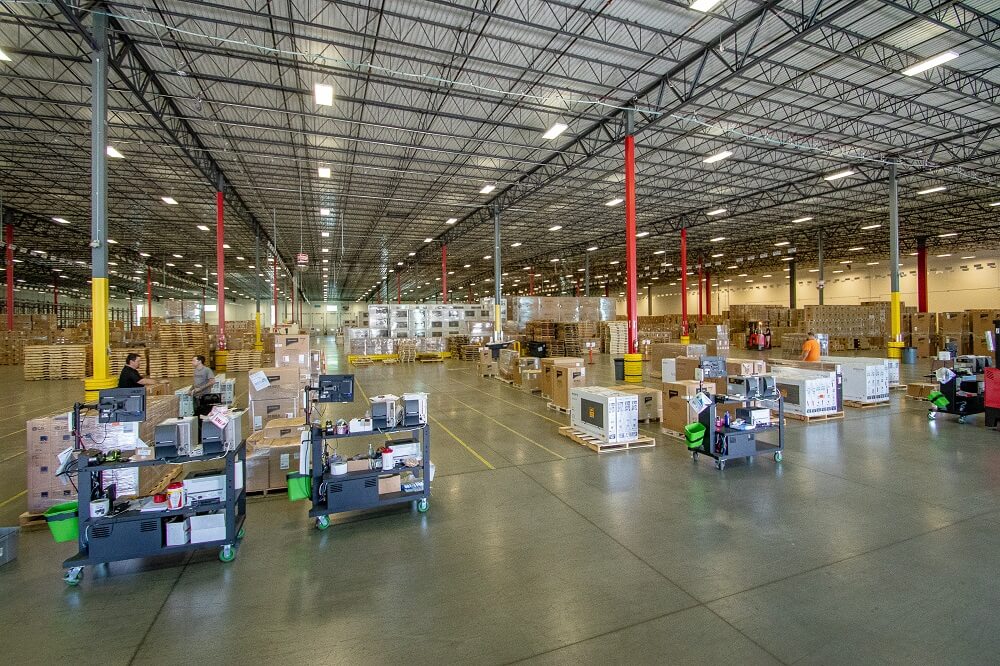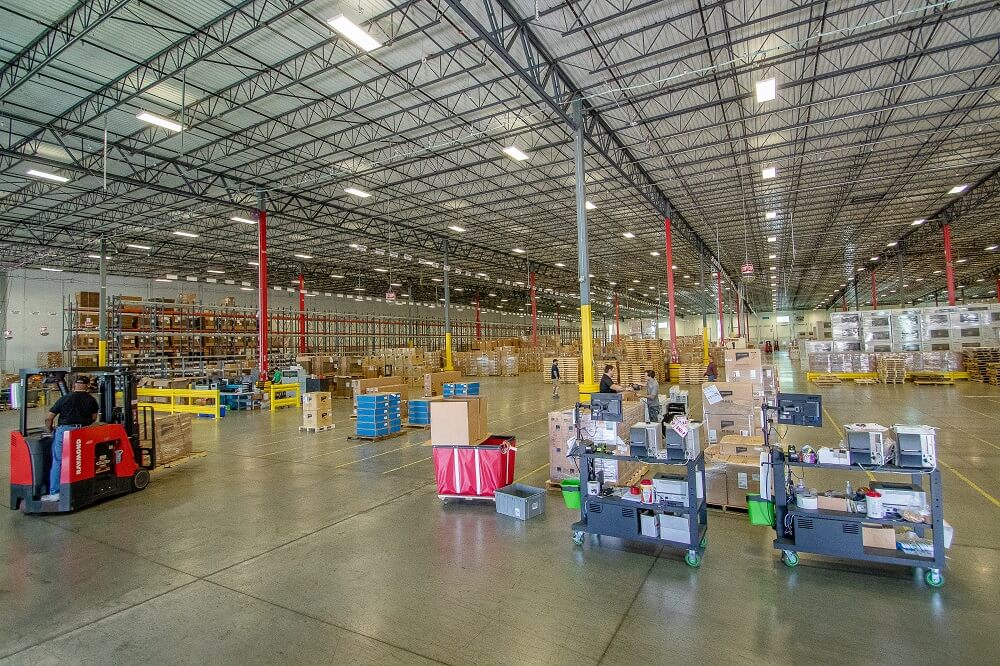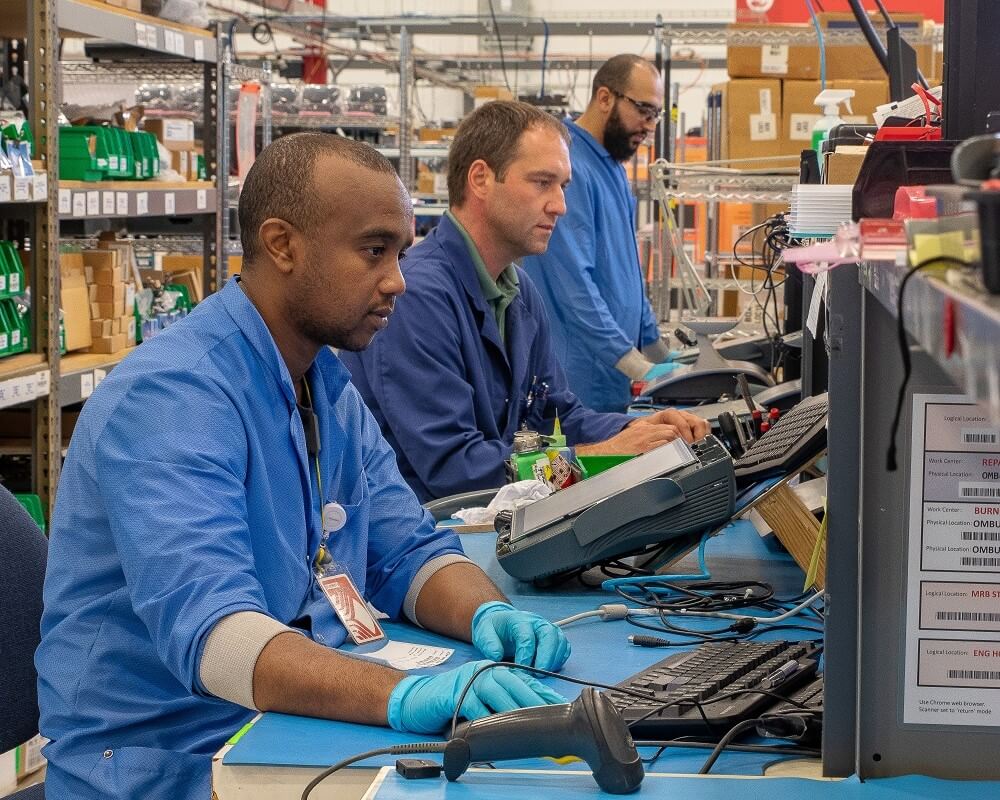The technology industry — more than any other — is constantly evolving, creating disruptions and spurring innovations that require companies to adapt, sometimes quickly and dramatically, or risk being left behind. Every aspect of business is affected, including technology manufacturers’ global logistics strategies, right down to their depot repair services.
Today, several key industry trends are shaping the way companies work to extend the life of their products:
- Globalization: The most recent wave of supply chain globalization is having an enormous impact on the way original equipment manufacturers (OEMs) strategize their global logistics initiatives. Moving products in and out of countries today can be very expensive, thanks to complex tax structures, new global regulations and import-export tariffs. Having a local, regional depot repair provider with global capabilities can go a long way toward helping OEMs navigate shifting requirements and logistics — and mitigate the costs.
- Sustainability: Initiatives that keep products from going into landfills are no longer just a “nice-to-have” but a requirement for business, which means IT sustainability and global logistics are taking a larger seat at the OEM strategy table. Developing products that can be repaired, reused or recycled is not only ideal for the environment but also can be a customer draw, as many consumers look to support businesses with shared ideologies.
- Mergers and acquisitions: A common strategy today for businesses that want to expand their reach is to join forces with another company offering products and services that complement their own. Mergers, acquisitions, partnerships and other alliances generally spark opportunities for tech companies to rethink how they organize their business overall. Because supply chain logistics are typically complex, these times of large-scale change are ideal for adopting best practices from all parties involved or taking the plunge to add support from an outside global logistics vendor to help streamline operations and reduce complexity.
When it comes to repair services, end customers still expect high-quality service delivered in a timely manner, regardless of the industry challenges OEMs face. A comprehensive global logistics strategy that considers spare parts availability and provisioning, inventory proximity and access, facility capacity and scalability, technology expertise, and overall repairs visibility is ultimately a critical component in maintaining customer satisfaction and can even boost new sales.
OEMs can differentiate themselves by focusing on supply chain agility, global sourcing and supplier relations. Robust repair program structure and reporting provide the vital foundation and valuable data insights to keep customers happy during times of industry change. A comprehensive repair strategy can also help OEMs lower the total cost of services and extend overall product lifetime value.
Choosing a Single Vendor for Repair Services
Oftentimes, OEMs assume that maintaining multiple technical products throughout their entire lifecycle requires multiple repair vendor partners. However, in practice, leveraging a single global logistics partner that has multi-vendor capabilities helps reduce complexity and prevent an inconsistent customer experience. With one repair relationship to manage rather than a large network, you can easily maintain full visibility across your supply chain and into repair status.
In addition, working with one vendor can drive a number of operational efficiencies. Because this approach requires less infrastructure and fewer resources to manage on your end, your total cost of services decreases. Beyond consolidating your depot repair services with one vendor, having a partner with a regional presence in multiple parts of the world means you can further save by no longer needing to move products all over the globe yourself and pay those import-export tariffs.
Not only do you want your repair service to be reliable, but you also want your products to find their way back into the field as quickly as possible. Being able to provide regional repairs increases your turnaround time, which then leads to greater customer satisfaction. Ensuring defective products are repaired quickly also helps optimize your inventory levels, enabling overall better inventory planning.
A single vendor helps you more easily navigate the changing global supply chain landscape by keeping track of differing regulations and other requirements. Having a single repair vendor also gives you greater control over your service offerings, ensuring that every customer receives consistent support. Your global logistics partner should ultimately give you the flexibility you need to be creative and nimble as you adapt to changes in the industry.
Embracing Data and Real-Time Visibility
Data analytics and real-time visibility can offer global logistics insights to help you take your business to the next level. Having access to real-time repair data enables you to view the status of products moving through the global logistics process so you know exactly what to expect from your repair partner and when. It can also help you keep track of inventory, which is critical when working with spare parts supply chain vendors who often have long delivery timelines.
In addition, coupling this reliable data with root-cause analysis can help drive business innovation. Getting to the root cause of why an end customer may be seeing product failures helps you mitigate future failures. Understanding failure trends — as in, which products are coming back for repair and what repairs are being made — can influence innovations in product design that lead to greater customer satisfaction and lower costs. For example, discovering that products are being damaged during shipping and delivery could lead to new packaging solutions or new procedures for shipping and receiving.
Overall, having access to real-time data can help you keep your balance in the ever-changing landscape of global logistics. As industry trends evolve, having this level of information, analysis and recommendations from an experienced global logistics partner helps you more easily pivot to meet new challenges and stay one step ahead of your competitors.
Finding the Right Global Logistics Partner
A single vendor can streamline your product repairs, simplify overall operations and help you provide a consistent customer experience. Having a global logistics partner you can work with regardless of the destination on your company road map allows you to stay flexible, nimble and adaptive to the constantly changing tech industry landscape.
Shyft Global Services helps businesses like yours implement best practices for comprehensive repair program management and reporting to provide the infrastructure and real-time data insights you need. Your customers benefit from a high-quality, consistent and reliable experience across the board.
Rethinking your depot repair strategy and outsourcing your global logistics operations enables you to better focus your energy on developing products rather than servicing them. Using best-in-class quality management systems in strategically located, state-of-the-art facilities, Shyft’s expert engineers and trained technicians ensure that your product operates optimally, and your customers get to experience the full value of using your equipment. In addition, Shyft’s services encompass the entire product lifecycle before and after repairs, enabling you to benefit from further services efficiencies.
About the Author
 Bobby Wallace serves as the General Manager of the CenterPoint facility in Groveport, Ohio, which encompasses Shyft’s widest range of end-to-end product lifecycle services. As Shyft’s repair services competency leader, Bobby focuses on customer growth, delivery and end-to-end business and portfolio management.
Bobby Wallace serves as the General Manager of the CenterPoint facility in Groveport, Ohio, which encompasses Shyft’s widest range of end-to-end product lifecycle services. As Shyft’s repair services competency leader, Bobby focuses on customer growth, delivery and end-to-end business and portfolio management.






